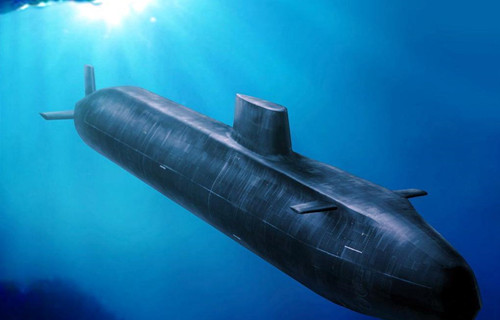计算机算法可谓科技界的明星,无论是国际象棋还是围棋,都使顶尖选手相形见绌。但是它们最近又学会了新本领:循声觅船。

In "The Hunt for Red October," the soviet submarine captain played by Sean Connery commands his crew to verify the location of a target. <
在影片《猎杀红色十月》中,肖恩·康纳利扮演的苏联潜艇舰长命令船员确认目标方位。(电影片段:“瓦西里,发个‘呯’声,发一声即可。”)
That ping is known as "active sonar." Bob Headrick of the Office of Naval Research, the ONR, says it’s the audio equivalent of switching on a flashlight. You’re getting information, but also broadcasting your location to other ships.
这种声音就是所谓的主动声呐。海军研究办公室的鲍勃·海德利克表示,发出这种声音与打开手电筒无异,虽然会获得信息,但是也向其他船只透露了自身位置。
"And you know the number one priority in the submarine is to remain undetected." Subs can keep their secrecy by eavesdropping on other ships instead… listening for propellers and electronics and so on. Such methods, known as "passive sonar,” generally require a skilled operator. But researchers are teaching machines to do it, too.
“驾驶潜艇,保持航行路线不为人知是重中之重。”潜艇收听推进器和电子元件的声音,监听其他船只位置,保持行驶路线的隐秘性。以上方法又称“被动声呐”,通常只有训练有素的操作员才能掌握。不过研究人员现在正在教授机器这项技术。
They first recorded the underwater rumblings of cargo ships off the California coast <
他们在加利福尼亚湾水面下安装了28个麦克风,记录加利福尼亚湾货船所发出的轰鸣声。他们将这种声音加入机器学习算法,然后为算法播放一段新录音,并对其提问:船在哪里?
"And it did extremely well." Emma Ozanich, a PhD Student in underwater acoustics at the Scripps Institution of Oceanography. Using the audio data, she says the algorithms pinpointed the ships to within a couple hundred meters, at distances of up to 10 kilometers.
斯克里普斯海洋研究所水中声学专业博士生艾玛·欧扎尼齐说:“计算机算法表现得不错。”她表示,借助音频数据,算法可在长达10千米的距离中将船只方位限定在几百米之内。
But it’s not so clear what the machines now know. "One of the interesting parts about machine learning, especially neural networks, is that it’s more difficult to pull out what it’s actually learning specifically. It’s a little bit of a black box." The research is in The Journal of the Acoustical Society of America.
然而人们仍不清楚机器究竟学会了什么。“人们发现,机器学习,尤其是神经网络的具体学习内容更加难以确定,这正是其耐人寻味的原因之一,它与黑匣子有些许类似。”这份研究报告发表在《美国声学协会期刊》上。
Bob Headrick of ONR says the data set used here is relatively simple, compared to the real-world scenarios subs would have to solve. Still, he says, with lots more development: "You could conceive with enough effort you create the computer program that can beat the trained operator."
海军研究办公室的鲍勃·海德利克表示,相比于现实中潜艇需要解决的问题,这些设定数据要相对简单一些。尽管如此,这也有了长足进步:“人们可以绞尽脑汁,设想自己设计出一种电脑程序,足以击败训练有素的专业人士。”
There is a precedent, after all, for machines defeating our best human operators. It was in that other great battle of the Cold War: the game of chess.
毕竟机器在特定领域战胜人类早有先例,而该领域正是冷战时期另一大战场:国际象棋。